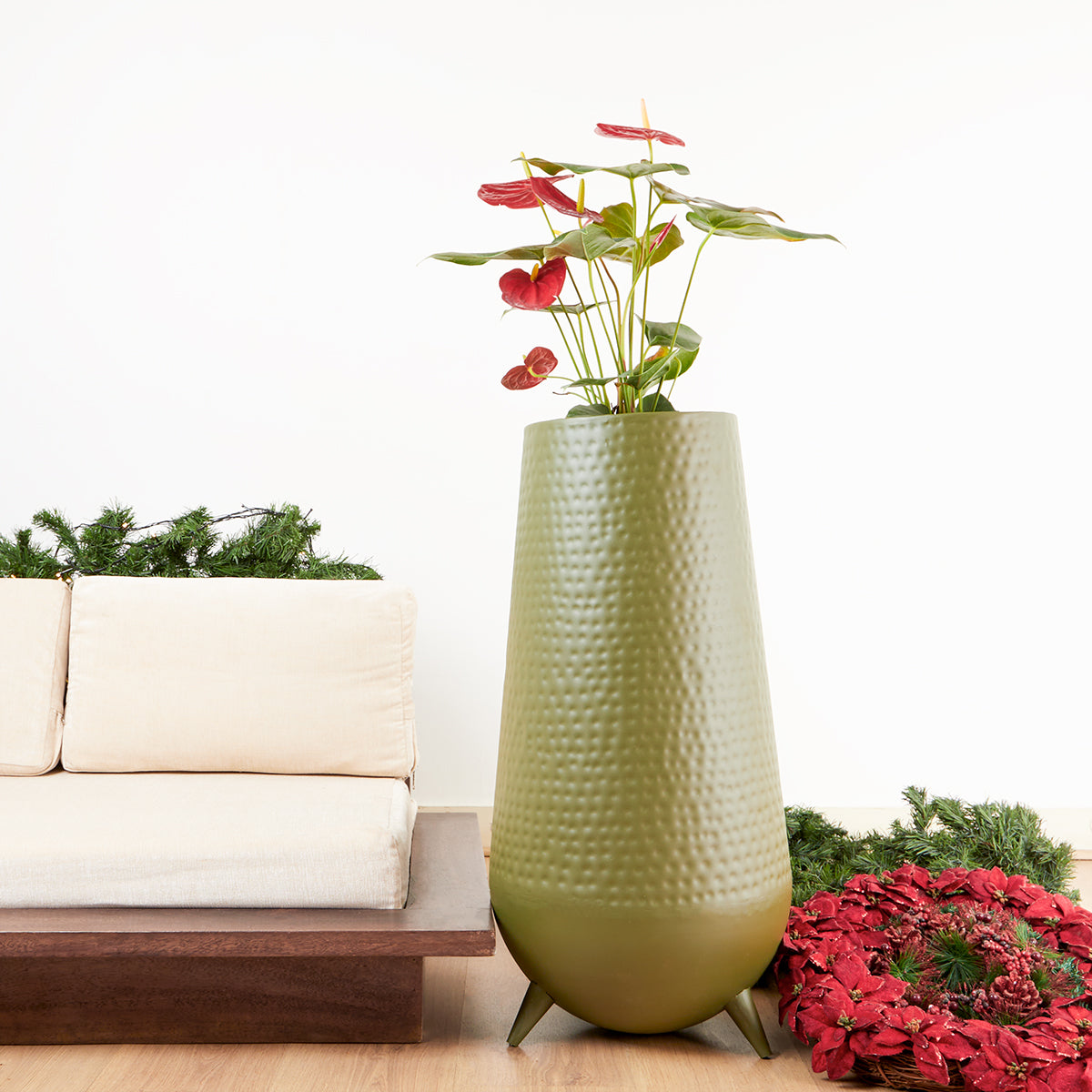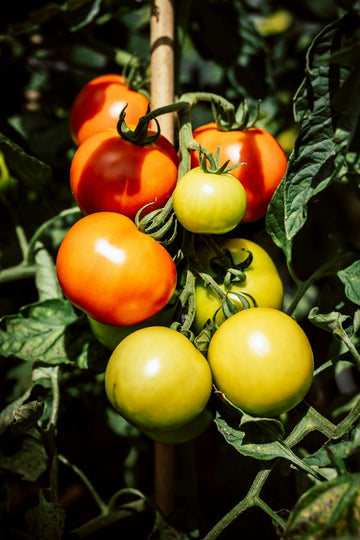Anthurium plants are famous for their bright red or pink heart-shaped blooms that will make a statement in any room. Being native plants to the tropical rainforests of South America, these hardy plants have evolved to thrive in the humid conditions of the rainforest floor, which makes them perfect for the Indian climate. In fact, anthuriums are so popular that they are commonly used as gifts for housewarming parties and festivals.
If you've recently brought an anthurium plant into your home, or you're considering getting one, it's essential to learn the basics of anthurium plant care. Let's dive in!
Tips for Anthurium Plant Care
Lighting Conditions | Watering & Humidity | Soil & Fertilizer | Pruning & Propagation | Common Pests & Diseases | Product Recommendation
Lighting Conditions
To keep your anthuriums healthy and thriving, proper lighting is essential. These plants require bright but indirect light, which means you should avoid exposing them to direct sunlight.

Direct sunlight can cause the leaves to burn and turn yellow and dry out the soil too quickly. The ideal location for anthurium plants to be set in a planter that is near a bright window that gets filtered sunlight throughout the day. You can also use a sheer curtain to provide a bit of shade if the window receives too much direct sunlight.
If you don't have a bright window in your home, you can use artificial lighting to supplement the natural light. Place a grow light near the plant to provide the necessary light spectrum for growth. Remember to keep the grow light on for around 10 to 12 hours a day.
(back to top)
Watering & Humidity
Watering anthurium plants is a delicate balance. Overwatering can lead to root rot, while underwatering can cause the leaves to wilt and turn yellow. As a general rule, water anthuriums once a week, but be sure to check the soil moisture level in the planter before watering. The top inch of soil should feel dry to the touch before you give your plant a drink. When watering, use room temperature water and avoid getting water on the leaves or flowers, as this can cause damage.
Anthurium plants love humidity, and maintaining high humidity levels is essential to their health. Dry air can cause the plant's leaves to curl and turn brown. You can increase humidity levels by placing a tray of water near the plant or by misting the leaves with water once or twice a day. Another effective method is to place the anthurium plant in a bathroom or kitchen where there is naturally high humidity. You can also group several plants together to create a mini greenhouse effect.
Avoid placing your anthurium plant in drafty areas or near heating and cooling vents, as these can cause fluctuations in temperature and humidity levels.
(back to top)
Soil and Fertilizer
When it comes to soil, anthuriums prefer well-draining soil that’s rich in organic matter. Mix in perlite or sand to improve drainage, and make sure the planter has drainage holes to prevent waterlogging. As for fertilizers, anthuriums thrive on balanced, slow-release fertilizers that are high in phosphorus. A monthly dose of fertilizer during the growing season should suffice.

Now, let’s talk about repotting. It’s crucial to repot your anthurium plant every two to three years to keep it healthy and growing. Choose a planter that’s one size up from its current container, and add fresh, well-draining soil with perlite or sand mixed in. Be careful not to damage the plant’s roots during the process. Make sure the pot has drainage holes to prevent water from pooling at the bottom.
Maintaining healthy soil conditions is also vital. Remove any dead or decaying leaves and stems and avoid leaving standing water in the pot. You can also top-dress the soil with a layer of fresh, organic matter to help retain moisture and improve nutrient availability.
(back to top)
Pruning and Propagation
When it comes to pruning, always start by removing any dead or damaged leaves. This will prevent the plant from wasting energy trying to repair these leaves and instead focus on producing new growth. You can also trim back any long or leggy stems to promote bushy growth. To encourage more blooms, snip off any spent flowers and any flower stems that have started to yellow.
If you want to propagate your anthurium plant, you have two options: division or stem cuttings. To divide the plant, gently remove it from its planter and use a clean knife to separate the root ball into two or more sections. Be sure each section has healthy roots and leaves. Then, replant each section in its own planter with fresh soil. For stem cuttings, simply snip a healthy stem with a few leaves and place it in a container with moist soil. Keep the soil moist and in a warm, bright location until new growth appears.
(back to top)
Common Pests and Diseases
While anthurium plants are relatively low-maintenance, they can still fall victim to pests and diseases. The most common pest is the spider mite, which can cause leaves to yellow and wither. Scale insects and mealybugs can also be problematic, as they suck the sap from the plant and weaken it over time. To prevent pests, it's important to keep the plant clean and dust-free and to inspect it regularly for any signs of infestation.
In terms of diseases, root rot is a common problem that can occur if the plant is overwatered or if the soil is not well-draining. This can cause the roots to rot and the plant to wilt. Anthuriums can also develop fungal infections, which can be identified by dark spots on the leaves or stems.
To treat pest infestations, you can use neem oil. For fungal infections, it's best to remove any affected leaves or stems and treat the plant with a fungicide. To prevent root rot, be sure to use well-draining soil and avoid overwatering.
(back to top)
Taking care of anthurium plants requires patience, attention to detail, and a bit of creativity. With the right conditions and care, these tropical beauties can flourish in any indoor space. Remember to always monitor light and water conditions, maintain healthy soil, and be on the lookout for any signs of pests or diseases. With proper care, your anthurium plant can thrive and produce stunning blooms for years to come.
Planters recommended for Anthurium
Discover more planters in our collection










 At Palasa, we believe in the seamless fusion of nature, design and humanity.
At Palasa, we believe in the seamless fusion of nature, design and humanity.